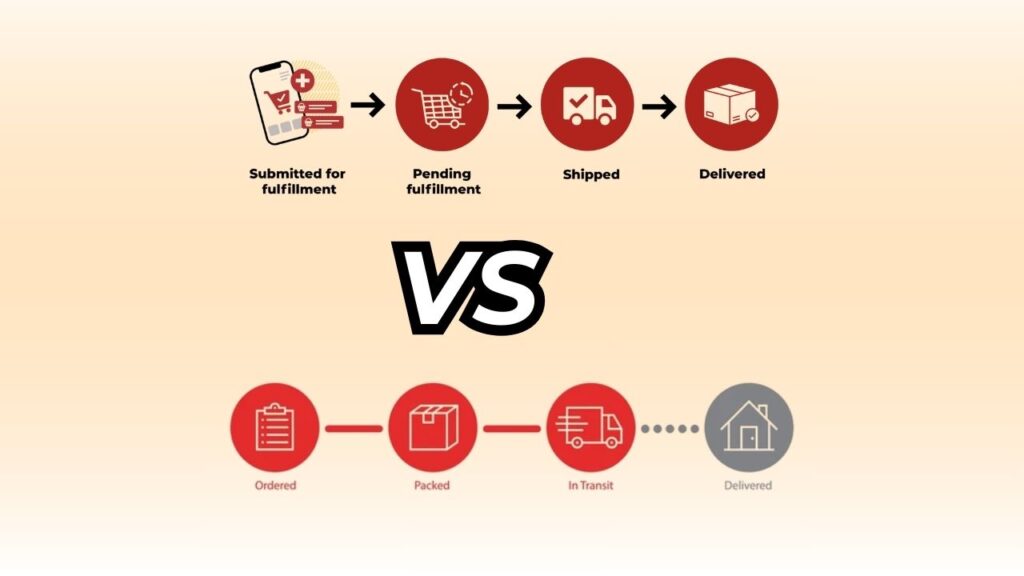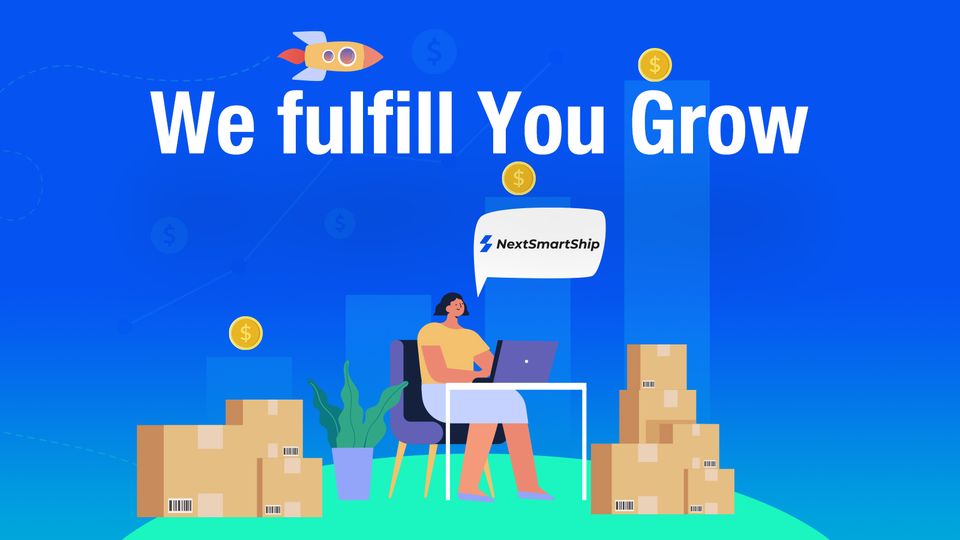A proper understanding of fulfillment status is crucial for any e-commerce business struggling with customer satisfaction and efficiency. Whenever a customer places an order, their order’s lifecycle at the order-receiving company begins. Before being delivered to the customer, the order goes through multiple stages, including picking, packing, and more. The status of the order at any point during its lifecycle is referred to as fulfillment status. But there’s more to it.
In this ultimate guide, we will dig deeper into the nitty gritty details of fulfillment status, its different stages, types, and more. So, without any further ado, let’s begin exploring!

What is Fulfillment Status?
The fulfillment status gives information about the current position of an order during the fulfillment process. With it, businesses can better manage and track orders, offering their customers information about the current fulfillment stage of their orders. Additionally, this status can also help optimize supply chain efficiency and ensure timely delivery.
Types of Fulfillment Status
Let’s now explore the different fulfillment statuses an order acquires throughout its lifetime.
Unfulfilled
When an order is received but not yet processed, its fulfillment status unfulfilled. This indicates that the order is either awaiting stock, fulfillment, or payment confirmation. Orders waiting in the processing queue are also labeled unfulfilled.
Partially Fulfilled
This status symbolizes that some items of the customer’s order are shipped while others are still in the fulfillment process. You may have observed this status for orders boasting multiple items. The delay is mainly caused by inventory shortages or logistical issues. Businesses must monitor the partially fulfilled orders to resolve bottlenecks, keep the customer updated, and ensure all the order items are delivered safely.
Fulfilled
Fulfilled status indicates that all the order items have been processed and delivered to the customer, and the transaction is finalized. Once an order reaches fulfilled status, it guarantees the customer’s expectations have been met, ensuring satisfaction.
On Hold
Next, we have the on-hold status. It indicates that the order processing has been paused temporarily and is awaiting shipment. There can be multiple reasons behind this, including verification requirements, inventory shortages, or payment issues. Businesses must clearly communicate with customers to avoid any sort of frustration during this stage.
Scheduled
When businesses plan to begin the fulfillment process at a specific date, they mark all the coming orders as scheduled. This status is exclusively useful for restocked or pre-ordered items and gives customers an estimate of the expected delivery date. Businesses can rely on automated systems to schedule orders, improve efficiency, and handle high volume orders.
Picked
If your order is marked as picked, the items featured in your product have been selected from the inventory. Picking must be done efficiently. Certain innovative technologies, like automated picking systems or barcode scanners, can be used to reduce the chances of mistakes in this process.
Packed
The next process is packing the picked items. This involves taking all measures to ensure products’ safety during transit. Businesses must use suitable packaging materials, like custom-fit boxes, to ensure the product securely fits in the box and won’t trip or get damaged during the shipping process.
Shipped
Lastly, when the order is picked, packed, and labeled, it’s handed to the shipping company. Thus, it’s marked as shipped. During this stage, customers receive a message from the shipping company or a notification from their seller featuring tracking information. This will let them overview the delivery progress and anticipate any potential delays due to weather conditions or customs delays.
Fulfillment Status vs. Order Status: What Are the Differences?

Though the terms fulfillment status and order status are used interchangeably, there are certain differences in both of them. Fulfillment status specifically refers to the shipping and delivery process of an order. It indicates whether an order is unfulfilled, partially fulfilled, fulfilled, or delivered, focusing on whether the items have been packed and shipped to the customer.
On the other hand, order status tracks an order’s overall progress from placement to completion, including stages like pending, confirmed, or completed. It focuses on whether the order has been received, processed, or closed.
Order Fulfillment Status Stages
By now, you have explored the basic difference between fulfillment status and order status. Let’s explore the different stages of order fulfillment status.
Placement
When an order is placed, the first step of the fulfillment process begins. It involves verifying customer details, payment details, and product specifications. If you have employees, an Order Management System must be efficient enough to swiftly validate orders and check if the ordered products are available in the inventory. Throughout this stage, fulfillment status is marked as Pending.
Processing
Order processing covers every step it takes to prepare an order for shipment. Businesses cautiously verify the payment status with the customer’s credit card company and ensure that the funds are available and the transaction is legitimate. Once it’s done, the next step is to update inventory levels and take care of the shipping labels and packaging slips.
Additionally, the expected delivery date is determined in this stage, and the customer is notified to ensure customer trust. The fulfillment status during this stage is marked as Processing.
Picking and Packing
The next step is to pick and pack the order items from the inventory and prepare them for shipment. Shipment companies are informed to pick up the order from the warehouse or fulfillment center and ship it to the customer. Once this is done, the order is marked as awaiting shipment.
Shipping
During this stage, businesses send the package to the shipping company, or the latter picks it up from the warehouse to ship goods via the method mentioned in the order details. It could be anything from ground, air, or expedited shipping. Shipping carriers must be reliable and experienced enough to ensure speedy and secure delivery of the goods to the customers. Prefer ones with diverse shipping options, like same-day, next-day, or standard shipping, yet competitive pricing
During this stage, the fulfillment status is Fulfilled on the business’ end and Shipped on that of the customers.
Returns and Exchanges
Businesses must be prepared well to handle returns and exchanges for ultimate customer satisfaction. Both these processes are considered reverse logistics, which involves cautiously managing the flow of the products from the customer to the business. Returns normally end up with full or partial refunds, depending on the details mentioned in the policy.
On the other hand, exchange initiates another order fulfillment that goes on simultaneously with the reverse logistics. In both cases, the fulfillment status changes from Completed to Returned and then back to Completed once the payment is refunded or the exchanged item is sent back to the customer.
Streamline Your Order Fulfillment with NextSmartShip

NextSmartShip is a reliable global fulfillment solution that best knows the DTC brands, aka direct-to-consumer brands. They have partnered with over 400 shipping lines and 15+ fulfillment centers to ensure a 40% reduction in costs for their customers. By now, they have collaborated with over 2000 DTC brands, ensuring they deliver goods to customers safely using the quickest and cheapest means possible.
Aside from this, they also cover inventory management via automated software that offers comprehensive real-time updates to the business regarding inventory levels. Moreover, customers also receive real-time updates about their orders. The best part? Their prices are lower than those of their competitors, yet their services are exceptional, making them ideal for small businesses trying to reach global markets.
Conclusion
Fulfillment status refers to the current state of order. It indicates whether the order is unfulfilled, partially fulfilled, or shipped. From the moment an order is placed to the moment it’s being shipped to the customer; the order goes through various fulfillment statuses. This status is somewhat different from the order status, so please don’t confuse both terms.
If you want to streamline your entire order fulfillment process, we recommend partnering with the NextSmartShip. It’s a 3PL service relying on innovative technologies to ensure seamless inventory management, sustainable packaging, and a streamlined shipping process. Curious to know more? Visit their website!



